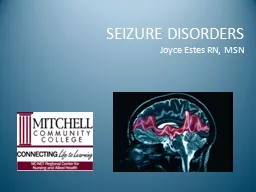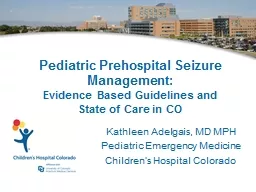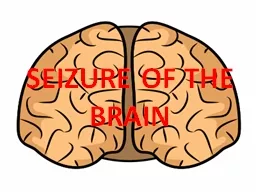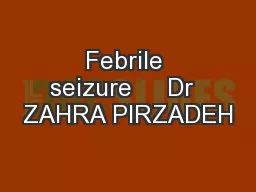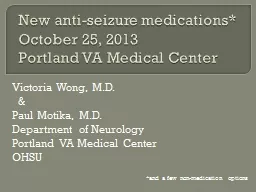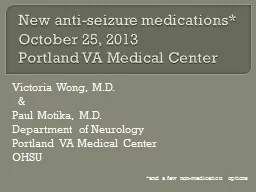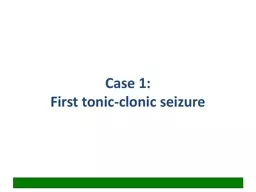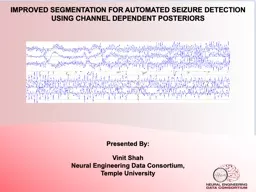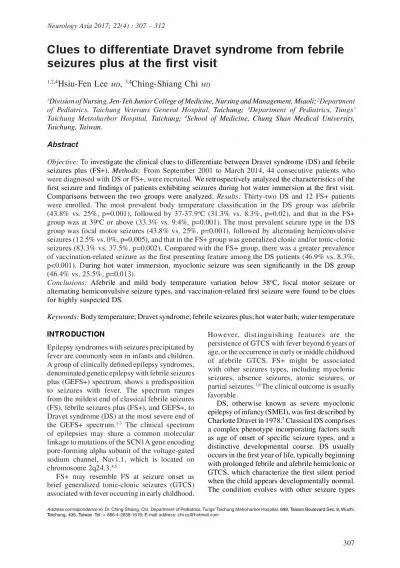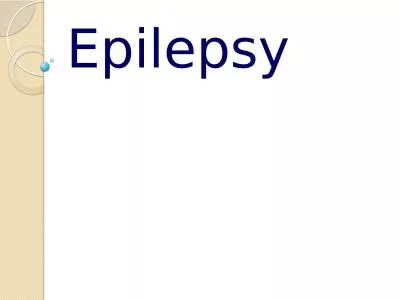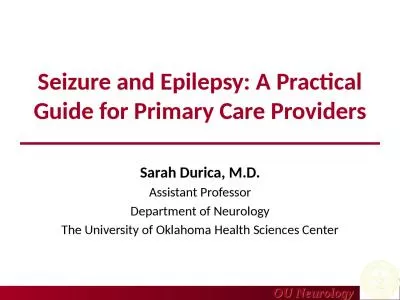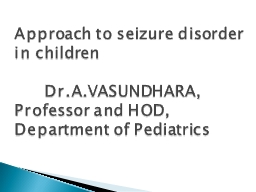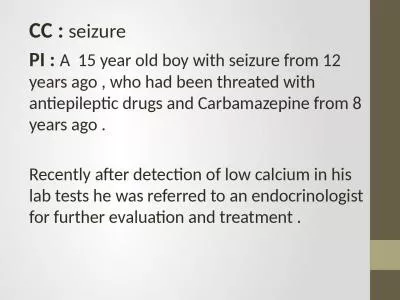PPT-SEIZURE DISORDERS
Author : myesha-ticknor | Published Date : 2016-03-09
Joyce Estes RN MSN Objectives By the end of this module the student will be able to Explain what a seizure is and the incidence of patients who have seizures Differentiate
Presentation Embed Code
Download Presentation
Download Presentation The PPT/PDF document "SEIZURE DISORDERS" is the property of its rightful owner. Permission is granted to download and print the materials on this website for personal, non-commercial use only, and to display it on your personal computer provided you do not modify the materials and that you retain all copyright notices contained in the materials. By downloading content from our website, you accept the terms of this agreement.
SEIZURE DISORDERS: Transcript
Download Rules Of Document
"SEIZURE DISORDERS"The content belongs to its owner. You may download and print it for personal use, without modification, and keep all copyright notices. By downloading, you agree to these terms.
Related Documents

